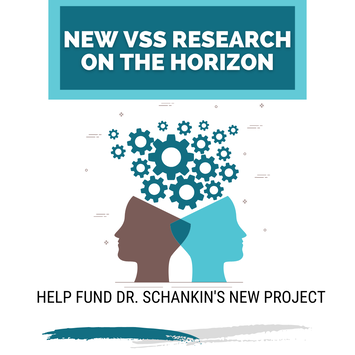June 2022 – It is clear that VSS is a disorder of the central nervous system. However, the underlying pathophysiological mechanisms remains elusive. More research is necessary to find out. Here, the researchers (led by dr. Fielding from Monash University) reveal no evidence of gross morphometry changes in the VSS brain, but widespread changes in the microstructure of the GM (Grey Matter), the most notable of these occurring in caudal regions including the occipital cortex. None of these changes are directly associated with the co-occurrence of migraine. While they were unable to determine the specific brain tissue that underlies microstructural changes, they do focus further investigations, contributing significantly to the understanding of VSS.

Here you can read more about the research.
We, from Visual Snow Europe, hope that Monash University can shed more light on VSS in their future studies.
More fundings are necessary to do that and we hope you will donate to Eye On Vision.
Best,
VSE-Team













